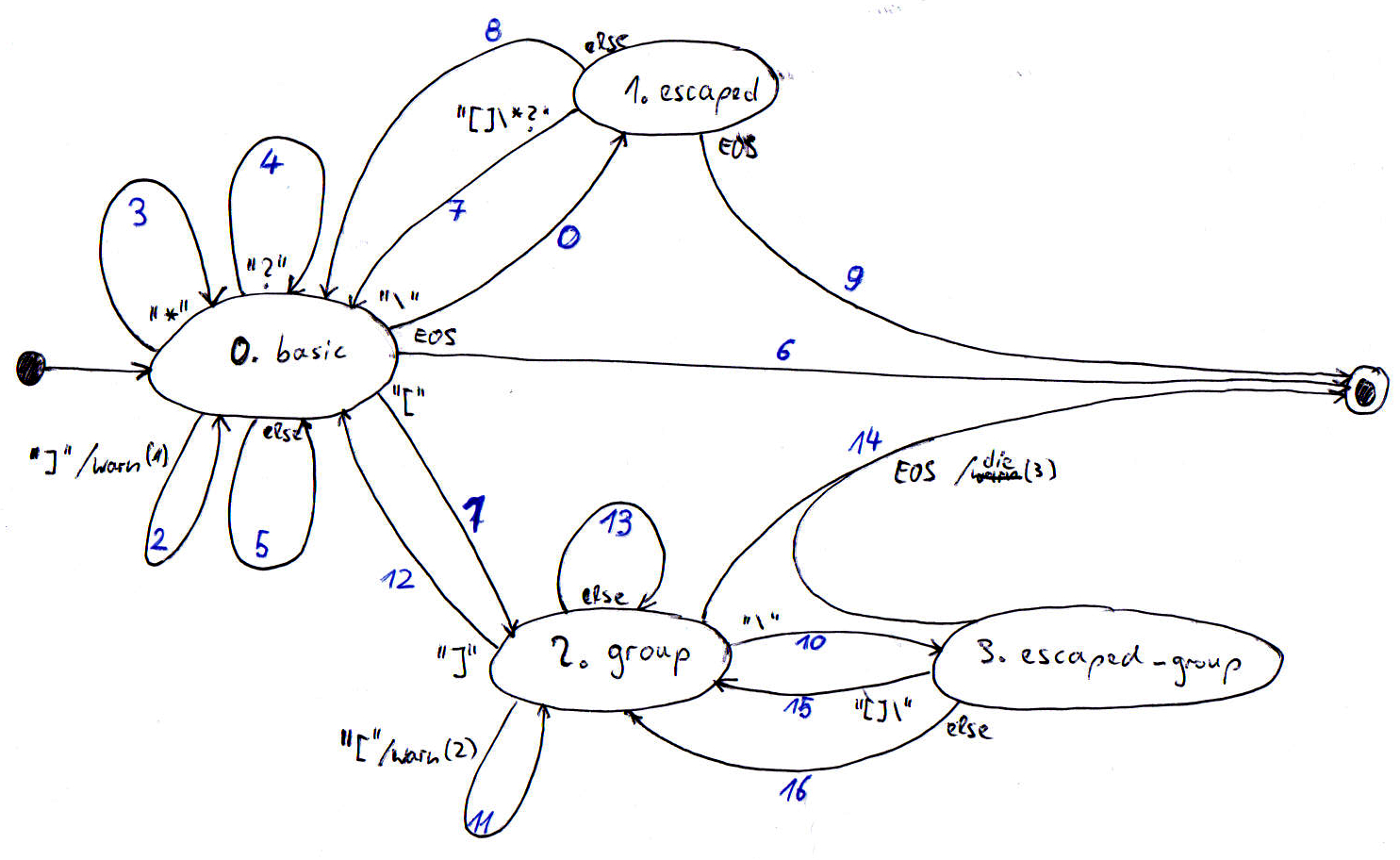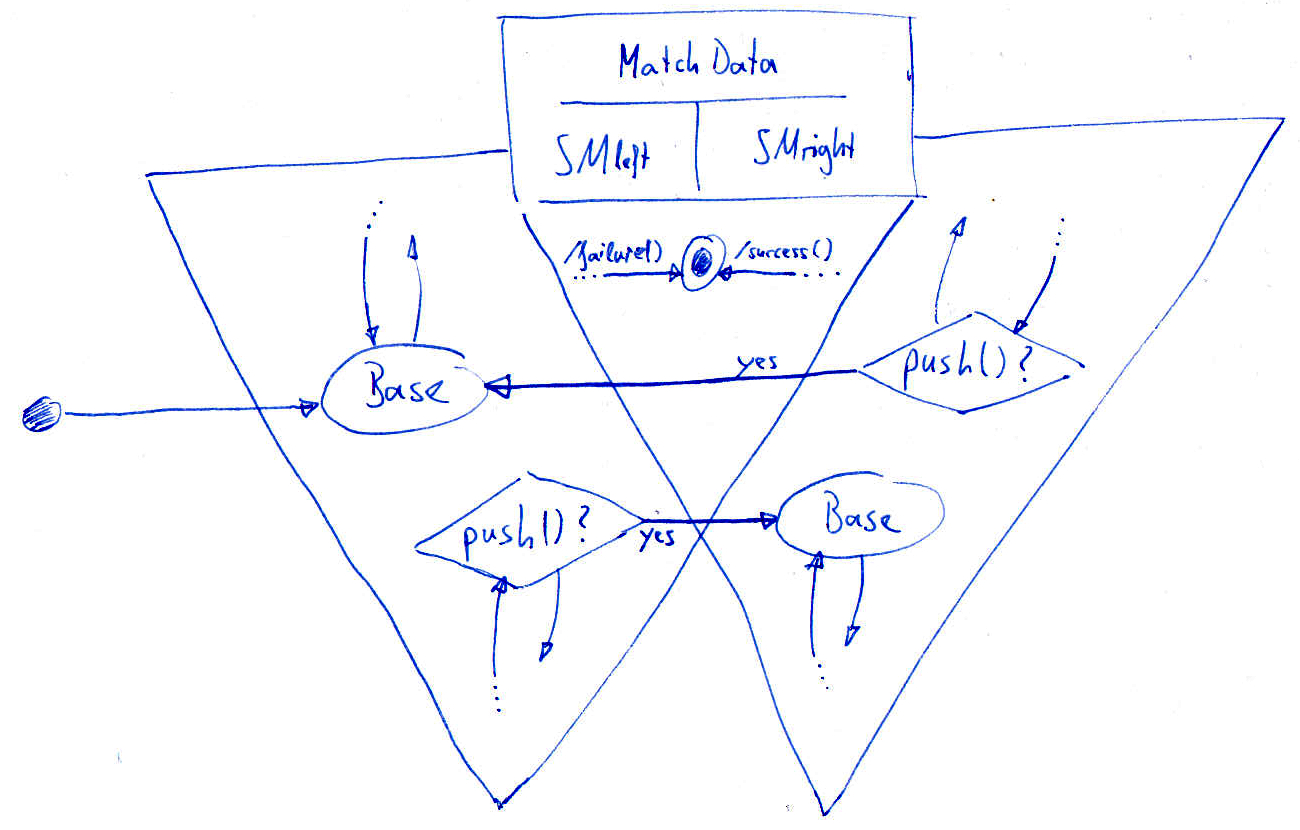Joker is a Wildcard matching library for Ruby (a.k.a. glob patterns).
History Lesson
It was born out of a Ruby mailing list posting, which asked if there was a library for glob patterns in Ruby -- which at the time there wasn't.
So I decided to write one. Couldn't be too hard now, could it?
First Attempt: Regexp Madness
The first attempt was of course a lazy and craziy one: Transforming the glob input string into a regular expression and letting Ruby do the rest.
Here's the "compiler":
def compile
ptr = 0
compiled = '^'
while ptr < @source.length
snip = @source[ptr..ptr]
case snip
when '\\'
lookahead = @source[ptr+1..ptr+1]
case snip
when '\\\\', '\\?', '\\*'
compiled << snip << lookahead
else
compiled << Regexp.quote(lookahead)
end
ptr += 1
when '?' then compiled << '.'
when '*' then compiled << '.*'
else compiled << Regexp.quote(snip)
end
ptr += 1
end
compiled + '$'
end
Ugly? Sure. But works.
The Crazier Path: C Extension
Then one day an even crazier idea popped into my head: why not make it perform super fast and implement it in C? After all: C extensions rock and I wanted to do one sometime anyways.
The odyssey that ensued can be found on this blog.
State Machines!
So, to make my C code super awesome (!), I decided (after some failed experiments with C string comparison functions...) to do it with state machines.
Because state machines rock. Seriously.
I used two distinct state machines:
- the compiler
- the matcher
with the former transforming the input string into a sequence of bytes (chars in C) and the latter matching that byte sequence against a string.
The Compiler
That's nice, isn't it?
It's not the final version, there have been minor changes, but you get the idea.
The big bulbs are the states, the arrows are
the transitions, which are annotated with
the input (EOS means end of string) that
triggers the transition and
a (blue) number to identify the transition.
The /die and /warn annotations mean
that processing of the string is aborted
(in the former case) or a warning is issued
(in the latter case).
Different actions are taken whenever a transition is triggered. This is done with one BIG switch-case statement. The actions range from do nothing to add something to the output byte string.
Internally, the relationship between states,
input and transitions is represented by a
two-dimensional array. That corresponds to
a function state x input --> transition.
The Matcher
This is a little more complicatied than the compiler, but the basic principles are the same.
Notice the rhombic field? That's a little
tricky. Here, a decision is made inside
transition 7, which enables the state
machine to backtrack. It corresponds
to the push() action in transition 0.
Every push saves the state machine's
state and two pointers onto a stack and every
pull() pops the last pushed state from
the stack. That way, the kleene stars
(*) are matched.
Also notice the dotted lines. That's where the next picture comes in.
The Monster
Whoa, what's that? Magic, that is...
This is how the matcher is used. Because one matcher is not enough. In order to work correctly, there have to be two state machines matching at the same time: one from the left and one from the right of the input.
They share the same match data, but may be
in different states. Also they do not run
in parallel, they take turns. Everytime
one calls push(), the other may start from
the Base state. Everytime one calls
pull(), the other takes over where the
last push() left off.
That's what the dotted lines meant in the second picture.
The two sort of close in on the middle
of the string that is matched and either
they meet in the middle (success())
or one of them fails (failure()) and
the matching is aborted.
Nice... ;-)
I hope you liked the insight. I just love that design :-)



